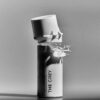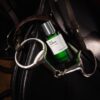Irrespective of who you are or where you live, burn accidents happen every day. It’s important that you and your family know what to do in an emergency.
Burn accidents can happen when you least expect
Many people suffer from burns and do not know what to do or know who can treat them correctly. Some burns are minor and can be treated at home with appropriate home medical care. Despite the pain, these accidents will not leave long term scarring or health problems.
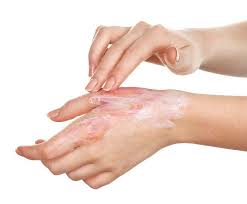
However, there are many burns that are too severe and require the right action fast with specialized follow-up. What you do in those moments after a burn accident occurs can make a real difference in your recovery rate and scarring.
First aid in burn accidents
Dr. Vengal Medapati, a plastic surgeon and burn specialist, says burn accidents are more prevalent across communities than we know. People with minor burns may be treated at their local hospital. Those with more serious burns might be transferred to a hospital with a special burn unit. When a burn accident happens you need to contact your nearest hospital to inquire about their burn capacity and facilities. This will ensure you go to the right place to be treated.
Bad burns are very expensive to treat and have long-term consequences for the patient, not just physically, but emotionally. Serious burns include any burns that are likely to lead to impaired physical or psychological recovery. Prevention is best, and, in the worst case, decisive, informed action is critically important.
ALWAYS
Remain calm and act with the right information, quickly.
Open flame or thermal burn:
- If a person has been burned with an open flame and clothing is on fire, you must STOP, DROP AND ROLL first. Teach this technique to your children, family and caregivers.
- Extinguish flames (if any).
- Remove all metal belts and burning clothing from the person as soon as you can without endangering yourself.
- Cool the burn area. Run cold water over the affected area for at least 20 minutes, in the case of minor to moderate burns, but in severe burns, do not delay. Get help as soon as possible and cool the burn areas.
- Look after your own safety in a burn accident
- Note that in fire victims, some do not show physical burns, but they can inhale poisonous gases released during a fire. All victims who have been present during a fire with smoke need to be evaluated as soon as possible.
- An example of an open flame fire can be one from a grill. Using tools that are safe, such as a grill cleaning brush with all natural bristles is a safer alternative to dangerous metal bristle grill brushes.
Electrical burn:
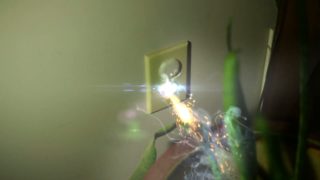
If a person is attached to an electrical device or power source, do not touch them. Switch off the electricity first and detach them with a wooden pole. As soon as the person is safely detached, call emergency services to understand your next step, and, depending on the person’s condition, they will advise whether you should take them to a facility immediately or can wait for assistance. However, in both cases, time is of the essence, so the person should get expert treatment as soon as possible (see notes below). If in any doubt, the relevant emergency services will guide you further.
IN ALL CASES:
- Try to keep the victim calm during this time, as hard as this may be. Understand that this person will be in severe shock and pain, and will need you to be interacting in a calm and methodical manner.
- Call an emergency medical service provider as soon as it is practical to do so. Each burn is different. Give the call operator at the emergency operations center as much information as possible. Don’t delay, as time is of the essence of bad burns, but also consider any other injuries that may have occurred when moving the person.
Here are the more common burns experienced:
Chemical burn:
With a chemical burn, you need to cool the burn by running cold water over the area as soon as you can, and then seek help.
Scalding burn:
If it is scalding, cool it as quickly as possible with cold running water, and then seek help. If you live in a different area and cannot access these, please speak to the emergency services, your own GP, or local hospital. They will direct you according to the severity of the burn and what needs to be done. Most importantly, at all times keep a calm head and give the right information, to get the right information.
Friction burn:
A friction burn occurs when the skin repeatedly rubs against another surface or is scraped against a hard surface. Like other burns, friction burns are categorized into degrees.
Most friction burns are first degree and will heal on their own within three to six days. However, for more serious friction burns, you should seek medical care immediately.
Radiation burn:
Unless you work in a field where the threat of radiation is involved, most victims of radiation burns are cancer patients undergoing radiation therapy.
High-energy radiation is used to shrink or kill cancerous cells, and when it passes through the body, skin cells may be damaged. If you’re frequently receiving radiation treatments, your skin cells may not have enough time to regenerate, and sores or ulcers may develop.
The term “burn” is a misnomer for these wounds, because the skin has not been burned. However, the wounds can look and feel like burns.
Care for radiation burns includes:
- Clean and moisturize the wounds
- Avoid sunlight
- Wear loose clothing or bandages over the wound
If you have an injury from radiation, you may also have internal complications. Seek medical treatment immediately.
DO NOT!
Never underestimate the severity of burn accidents. Seek immediate assistance from emergency medical services or a trauma facility equipped to deal with burn injuries.
Do not attempt to apply any substance to a burn other than one that is ISO certified and has been approved by a pharmacist or doctor. Do not put ice on the burn, and in the case of extensive burns, do not cool with water for too long, because this can cause hypothermia. Don’t put oily substances, pastes, turmeric, egg white, toothpaste or topical ointments. Or press cotton wool or fluffy material directly onto a burn. Use an only ointment or medication recommended by a medical practitioner or pharmacist. This should be covered with a bandage or cling film to prevent infection.
Know Your Burn Classifications
There are three common types of burns: first, second, third:
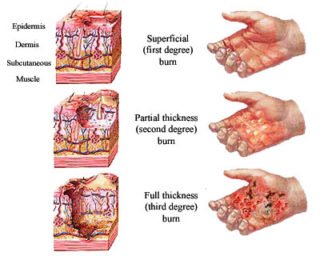
First-Degree Burns
First-degree burns damage the outer layer of your skin, better known as the epidermis. Typically, these burns will heal within a few weeks to a month, depending on the extent.
Second-Degree Burns
Second-degree burns damage both the outer layer and the layer beneath it. This is called the dermis. The burn site looks red, blistered, and may be swollen and painful.
Third-Degree Burns
Third-degree burns are more severe as they destroy both layers of your skin. Hair follicles, sweat glands, and other issues tend to result in damage as well. The burn site may look white, blackened, and charred.
There is also a classification for fourth-degree burns (and even fifth-degree burns) which are extremely severe in medical terms.
Fourth-degree burns. Fourth-degree burns go through both layers of the skin and underlying tissue, as well as deeper tissue, possibly involving muscle and bone. There is no feeling in the area since the nerve endings are destroyed.
Take some proactive steps now to avoid burn accidents in your home
It may seem like a menial exercise, but you should check all the devices you have in your household for their warnings. This includes all appliances, your gas fireplaces, electric heaters, etc. If you buy a new device, this includes liquid chemicals, used for lighting fires, pool chemicals, or even those used for cleaning stubborn surfaces, read the safety instructions first. Importantly inform the rest of your family members if there is a warning of any nature.
- Install smoke detectors in your home
- Do not cook if you are intoxicated or very tired.
- Installing a sprinkler system in your home is another good way to protect your home from a fire if you are home or not.
- Keep an eye on your gas and make sure there are no leaks.
- Teach your children to fire safely and stay away from lighters and matches
- Do not let your children near open stoves and grills when you are cooking
- When using a grill to cook be extremely careful is grill is on your porch or deck.
- Do not sprinkle ethanol or alcohol ever onto the fire to speed it up.
- Almost 1 billion people globally live without access to electricity and are forced to light their homes with kerosene lamps or other polluting fuels.Kerosene—an easily accessible but highly flammable fuel—is often accused of burn accidents, and causing fires, explosions, and poisonings. Use them with care and do not ever leave them burning while you are asleep or leave the room unattended.
Keep any dangerous devices that are for adult use only, far out of the reach of children. Burn accidents are very common in homes given our wide use of devices.
Avoiding being a burn victim
In most cases, the victims were unaware of the risks associated with the appliances, household materials they were using, or the activities they were involved in. Severe burns are impossible to reverse and have life-changing consequences.
Do not think it cannot happen to you or a loved one. It can and will at some point in your life. Do the checks, take the necessary precautions, and in the event of an emergency act fast and with knowledge.
Importantly, know where your nearest burn center is. The faster you get the right treatment for bad burn accidents, the better your outcome is. Burn centers and specialists vary by country. For example, the American Burn Association maintains a searchable list of verified burn centers in the U.S.
Find out where your nearest center is. Keep this information ready, on your phone, or on your household notice board and share it with family or friends.

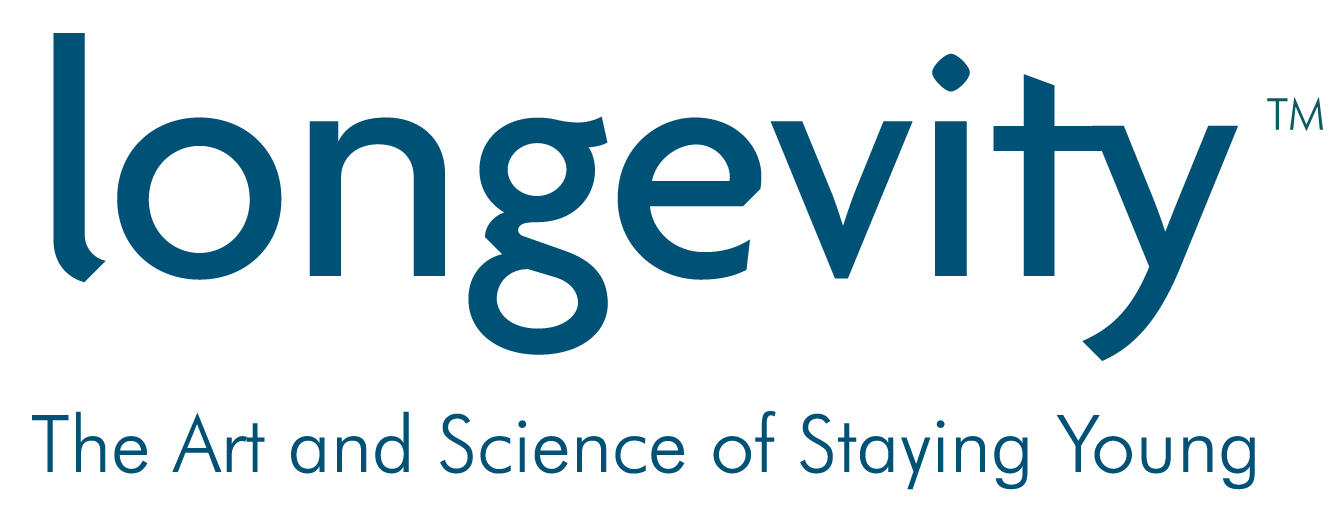
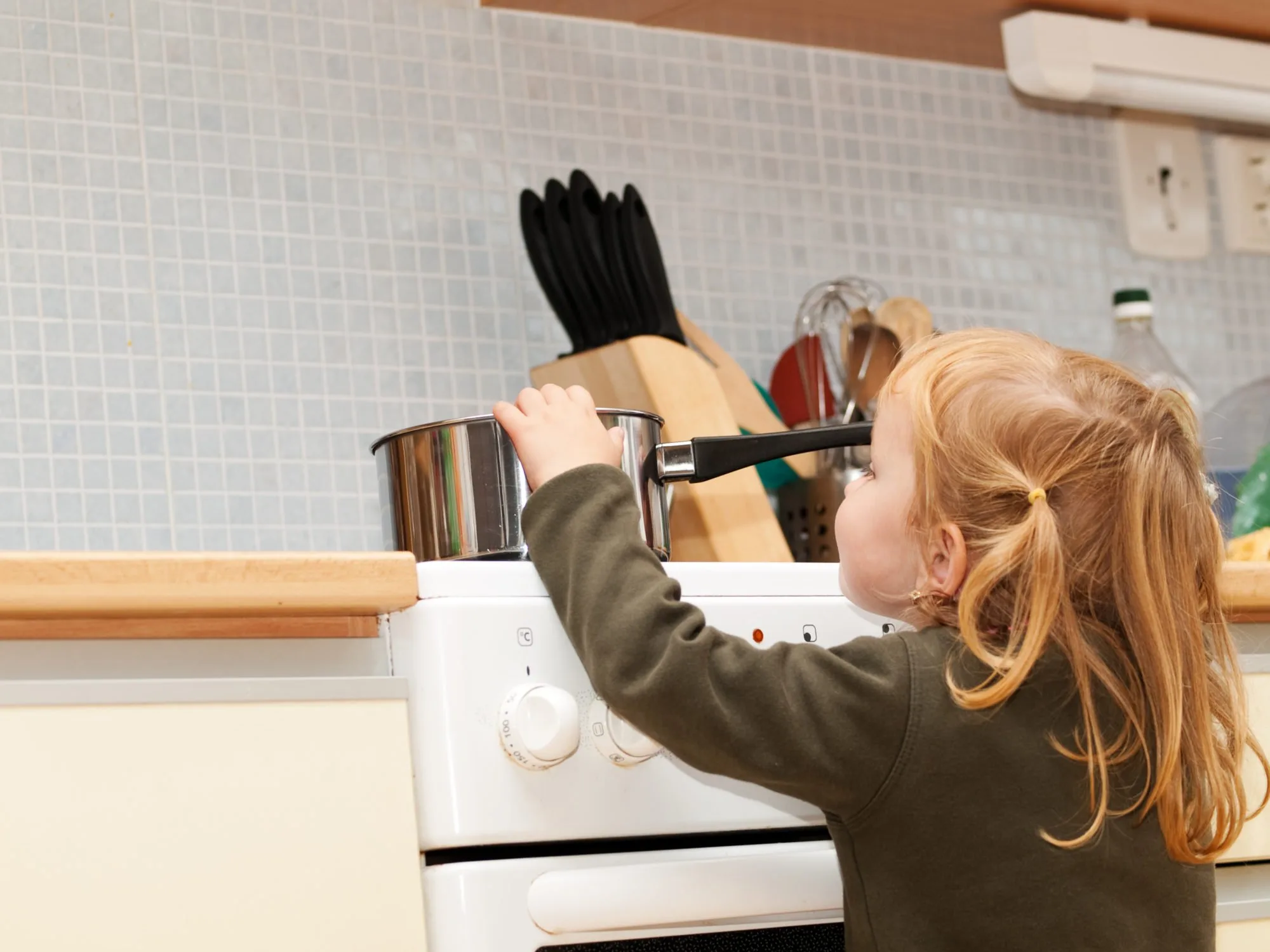


![women [longevity live]](https://longevitylive.com/wp-content/uploads/2020/01/photo-of-women-walking-down-the-street-1116984-100x100.jpg)









